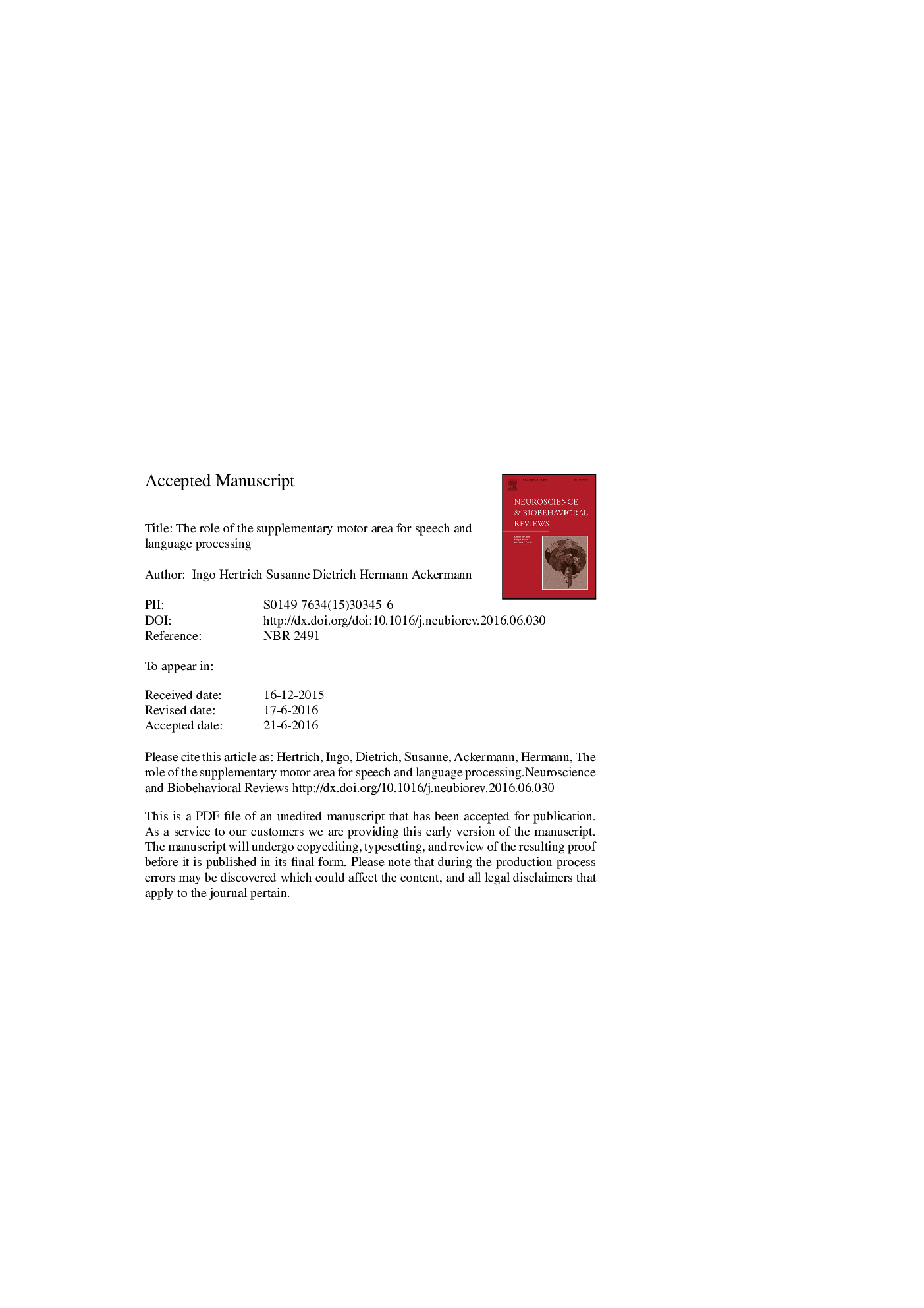| Article ID | Journal | Published Year | Pages | File Type |
|---|---|---|---|---|
| 7302968 | Neuroscience & Biobehavioral Reviews | 2016 | 30 Pages |
Abstract
Apart from its function in speech motor control, the supplementary motor area (SMA) has largely been neglected in models of speech and language processing in the brain. The aim of this review paper is to summarize more recent work, suggesting that the SMA has various superordinate control functions during speech communication and language reception, which is particularly relevant in case of increased task demands. The SMA is subdivided into a posterior region serving predominantly motor-related functions (SMA proper) whereas the anterior part (pre-SMA) is involved in higher-order cognitive control mechanisms. In analogy to motor triggering functions of the SMA proper, the pre-SMA seems to manage procedural aspects of cognitive processing. These latter functions, among others, comprise attentional switching, ambiguity resolution, context integration, and coordination between procedural and declarative memory structures. Regarding language processing, this refers, for example, to the use of inner speech mechanisms during language encoding, but also to lexical disambiguation, syntax and prosody integration, and context-tracking.
Related Topics
Life Sciences
Neuroscience
Behavioral Neuroscience
Authors
Ingo Hertrich, Susanne Dietrich, Hermann Ackermann,
